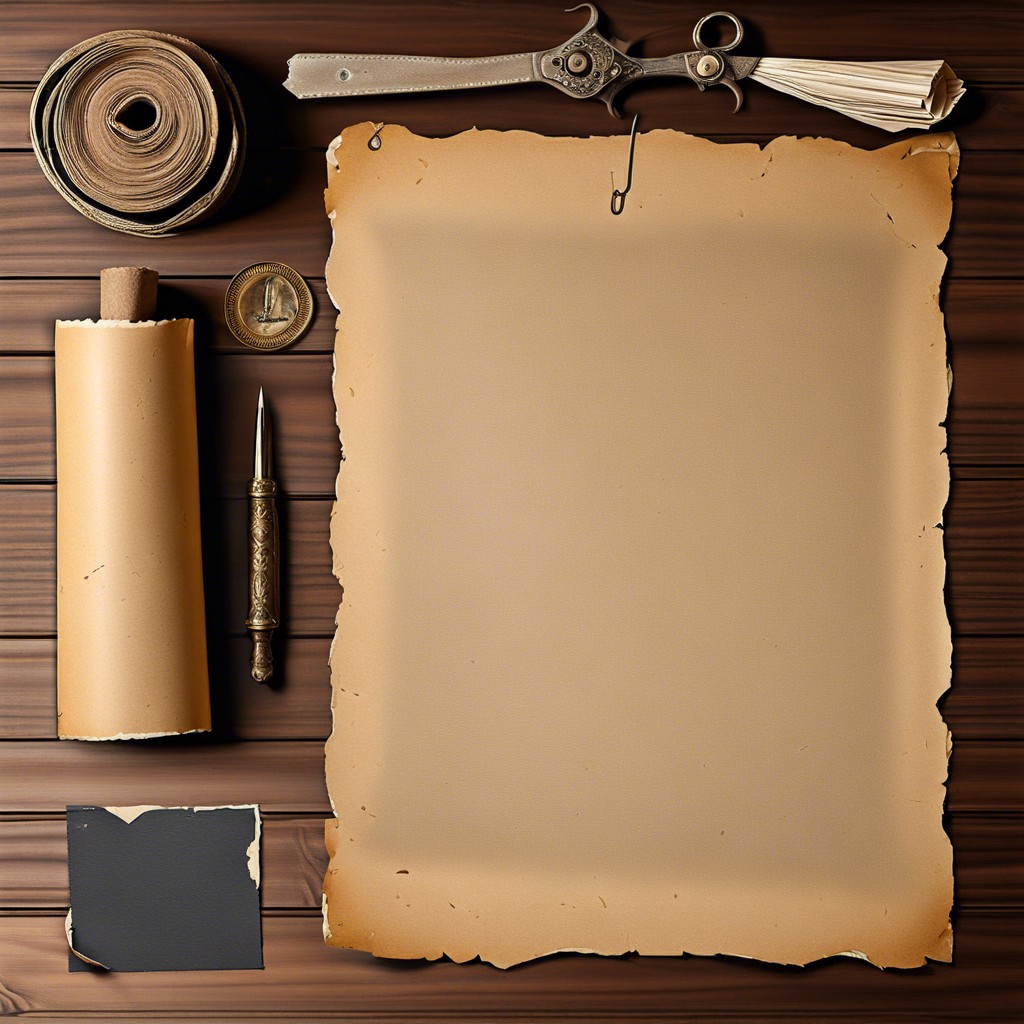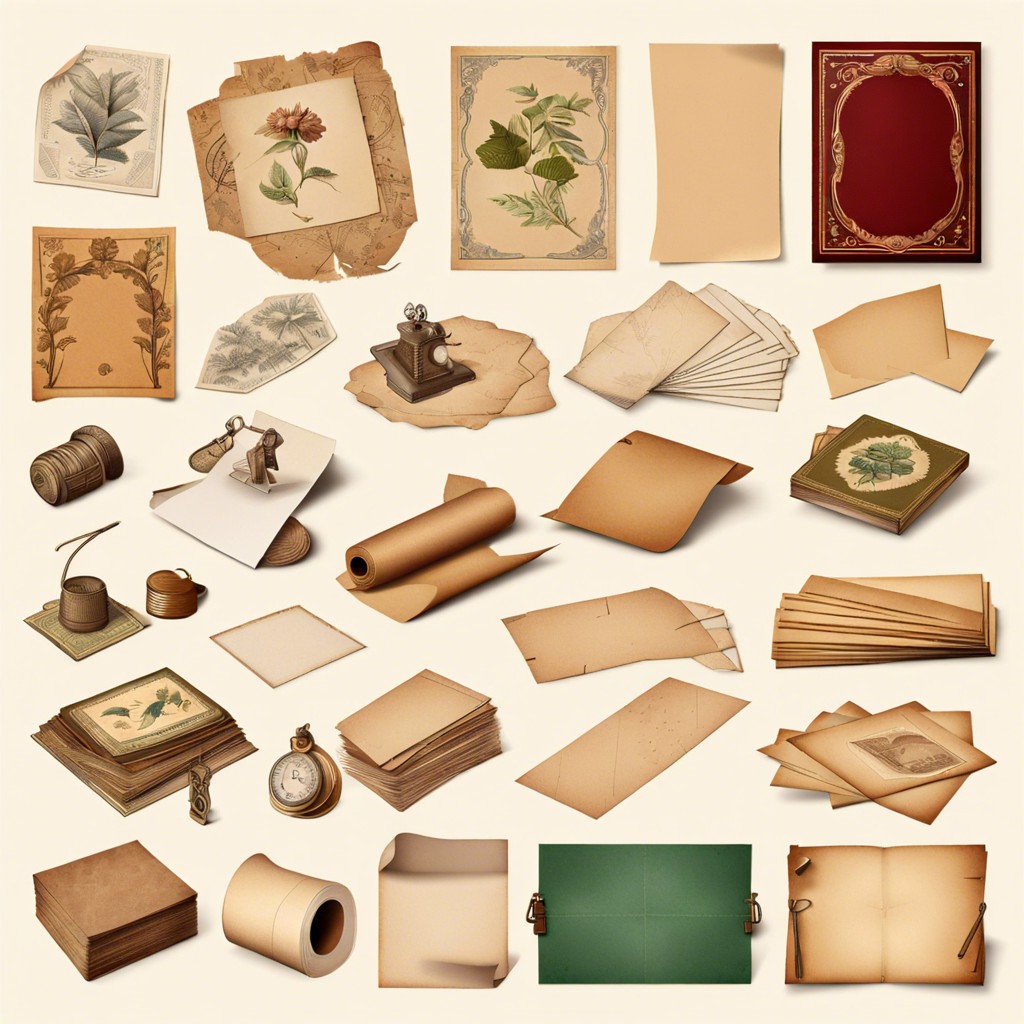Last updated on
This article sheds light on vintage paper, including its types, historical significance, and preservation tips.
Key takeaways:
- Vintage paper encompasses postcards, photos, letters, and more.
- Historical significance of vintage paper connects us to the past.
- Preservation techniques include handling, storage, and regular inspections.
- Value of vintage paper depends on rarity, condition, and provenance.
- Current trends include items with historical connections and DIY crafts.
Definition of Vintage Paper

Vintage paper captures the essence of a bygone era, often classified as any paper product over 20 years old. This includes a variety of items: postcards, photographs, letters, advertising prints, posters, and books. The charm of these items lies in their antiquity and the history they carry. However, not every old piece of paper meets the vintage criteria; condition, rarity, and cultural significance factor into its classification. Ephemera, often disposable written or printed material not intended to be retained or preserved, plays a vital role in this category, providing snapshots of everyday life from the past. Collectors prize these artifacts for their connection to historical events, fashion, art, and social movements.
Historical Significance

Paper, in its various forms, has chronicled human progression from everyday transactions to monumental historical events. Think of vintage paper as a silent witness to the past; it carries stories from bygone eras that offer a physical connection to our ancestors and their cultures. Ancient manuscripts, maps, and letters provide a tangible link to moments that shaped the world.
When considering the import of vintage paper, it is crucial to appreciate its role as a medium for art and communication. The aesthetic preferences and craftsmanship found in historical documents illuminate the artistic trends and technological advancements of their time.
Moreover, the paper has served as a vessel for knowledge, carrying intellectual achievements across continents and centuries. The preservation of such documents contributes to our understanding of historical contexts, ideologies, and societal structures.
Collectors and historians often seek out these pieces for their ability to offer insights that transcend the written word, revealing the conditions of their creation, from the watermark patterns that identify the papermaker to the wear marks that echo the document’s journey through time.
Preservation Techniques

Protecting vintage paper from deterioration requires careful handling and storage. Sunlight, humidity, and contact with acidic materials can accelerate decay. Use acid-free folders and archival storage boxes to create a stable environment. For display, ultraviolet-filtering glass frames safeguard against light damage. Handling should be minimized, but when necessary, clean hands or cotton gloves prevent oils from transferring to the paper. If needed, consult a professional conservator for repair or deacidification to arrest further damage and extend the lifespan of the paper. Regular inspections help catch issues early, ensuring the longevity of these delicate historical artifacts.
Value and Appraisal Methods

Assessing the worth of vintage paper hinges on several factors, making it a bit like piecing together a historical puzzle. Rarity steals the limelight here; a piece with limited copies often fetches a higher price. The paper’s age acts as a double-edged sword; while older items might suggest higher value, condition reigns supreme. Tears, stains, or marks can greatly diminish worth.
Provenance can add layers of value, transforming an ordinary item into a sought-after treasure. Historical connection, for instance, boosts the appeal – a note from a famous author or a map from a historic event.
Authentication is crucial; it separates genuine artifacts from skillful reproductions. Specialized appraisers employ both science and scholarship, looking at ink composition and paper fibers to authenticate a piece.
Market trends can sway value as well. Collectors’ preferences shift over time, influenced by pop culture and current events. Supply and demand also drive the final appraisal, with less available items generally commanding higher prices.
Remember, it’s a mix of tangible attributes and intangible allure that determines an item’s market value. Keep abreast of the latest collector trends and historical discoveries to stay informed on vintage paper value.
Trends in Vintage Paper Collecting

Collectors’ preferences constantly evolve, just as fashions do in the textile industry. Currently, there’s a marked interest in paper items with historical connections, such as letters from wartime or vintage postcards featuring now-transformed cityscapes. These items capture moments in time, offering a tangible link to the past.
Another point to consider is the rise in popularity of DIY crafts. Ephemera like old maps and music sheets are sought after for creative projects. They add an authentic vintage flair to scrapbooks, journals, and other handcrafted goods.
The sustainability movement also plays a role. Environmentally conscious individuals are increasingly drawn to older paper goods. These eco-friendly enthusiasts appreciate the recycling aspect and the avoidance of further depleting resources for new paper production.
Moreover, there’s a growing fascination with rare books and first editions. They are the stars of the show in many distinguished collectors’ libraries. Not only are they aesthetically pleasing, but they also serve as a wise investment, often appreciating in value over time.
Understanding these trends helps collectors to stay ahead of the curve, making informed decisions that could pay dividends in both personal enjoyment and potential financial return.




